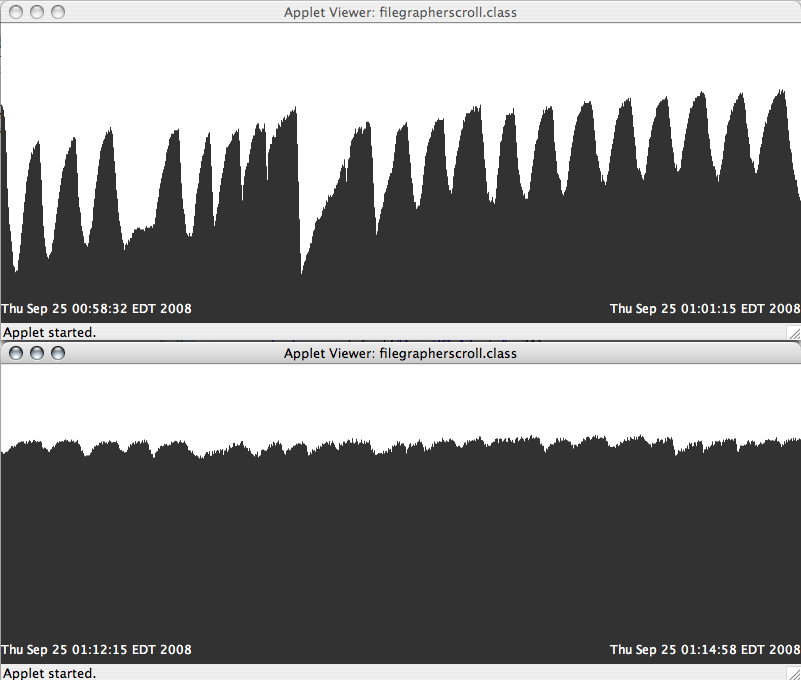I am interested in learning more about how improved efforts toward monitoring and directing breathing can have a significant effect on our health and quality of life. The connections between daily stress, ample sleep, and the vagas nerve, have been first on my list of investigation. Lucid dreaming and posture are other pieces that feel related and I hope to tie in to this project. My inspiration mainly comes from regular observations and Linda Stone’s recent talk given here at ITP.
For the first assignment (”point the sensor at yourself”) in Rest of You, I have built a simple breath monitor with a stretch sensor and the Arduino. The code I’ve used so far is built on the code provided in the class blog, and I’m starting to gain familiarity with the Eclipse IDE. I’ve recorded my breathing in several scenarios and look forward to finding a clear project concept. Visualizing Data by Ben Fry is a text that has started to guide my process and the question I want to answer might go something like____. Sciencedaily.com is a resource that I am looking to for further knowledge as well.
In relation to the assignment for Crafting with Data, I re-logged data after enhancing the sensing mechanism, code, and measuring my breath while positioned horizontally in both states (resting and post-activity). The visualizations make more sense on one hand, but are completely strange on the other. I suppose this is proof that collecting good data is not a simple task.
My code and screen shots are below.
in eclipse: serialtofile and filegrapherscroll
on arduino: analogread


